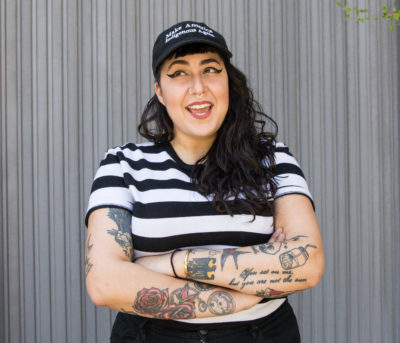 In 2012, the Navajo Nation sued Urban Outfitters for appropriating the name of the tribe and traditional tribal patterns to decorate objects such as a flask and a “Navajo hipster panty.” Though the two parties settled last November, the dispute remains a signal one for the debate about cultural appropriation in fashion. Student Regan de Loggans, MA Fashion and Textile Studies ’17, designed a hypothetical exhibition about how fashion has appropriated Native American motifs for her Museum Theory course. The project took her out of the classroom and into the real world when friends at the National Museum of the American Indian (NMAI) in Manhattan, which was preparing a show about Native American fashion, asked to see her concept. The museum has since brought in de Loggans, a member of the Choctaw tribe, to serve as a cultural consultant and to lead public programming events for the show.
In 2012, the Navajo Nation sued Urban Outfitters for appropriating the name of the tribe and traditional tribal patterns to decorate objects such as a flask and a “Navajo hipster panty.” Though the two parties settled last November, the dispute remains a signal one for the debate about cultural appropriation in fashion. Student Regan de Loggans, MA Fashion and Textile Studies ’17, designed a hypothetical exhibition about how fashion has appropriated Native American motifs for her Museum Theory course. The project took her out of the classroom and into the real world when friends at the National Museum of the American Indian (NMAI) in Manhattan, which was preparing a show about Native American fashion, asked to see her concept. The museum has since brought in de Loggans, a member of the Choctaw tribe, to serve as a cultural consultant and to lead public programming events for the show.
FIT Newsroom: “Cultural appropriation” is a phrase you hear more and more these days.
Regan de Loggans: Last fall, there was a controversy because Marc Jacobs sent out white models wearing dreadlocks. Dreadlocks are significant to people of color, and white people wearing dreadlocks is wildly inappropriate. The show attempted to normalize cultural appropriation. I couldn’t even look at the clothes.
You’re developing a program for teens from communities of color on June 8 at the museum. What’s going to happen?
Jared Yazzie, a Navajo and the designer of the fashion line OXDX, will teach a workshop on socially and culturally conscious graphics. Taos Pueblo designer Patricia Michaels, who was on Project Runway, is teaching a workshop on rendering. Two of her items are in the show. And I am teaching a class in weaving.
What do you want young people to get out of it?
The idea is to show teens from communities of color and impoverished communities that design isn’t just a field for white people. We’ll have a workshop about how students can assemble a design portfolio for college. And they can tour the show itself, which features Native American designers from the 1950s until today.
The NMAI exhibition Native Fashion Now is on view through September 4.
